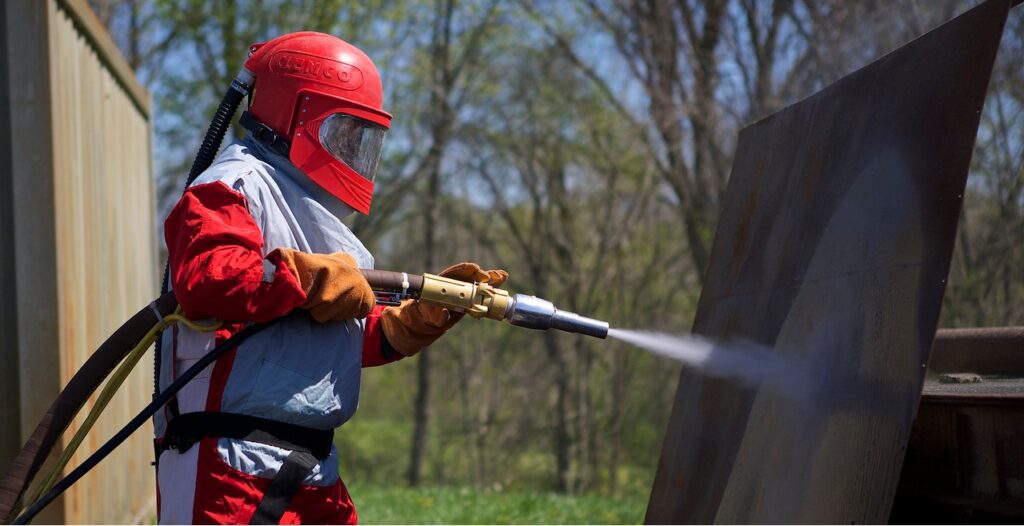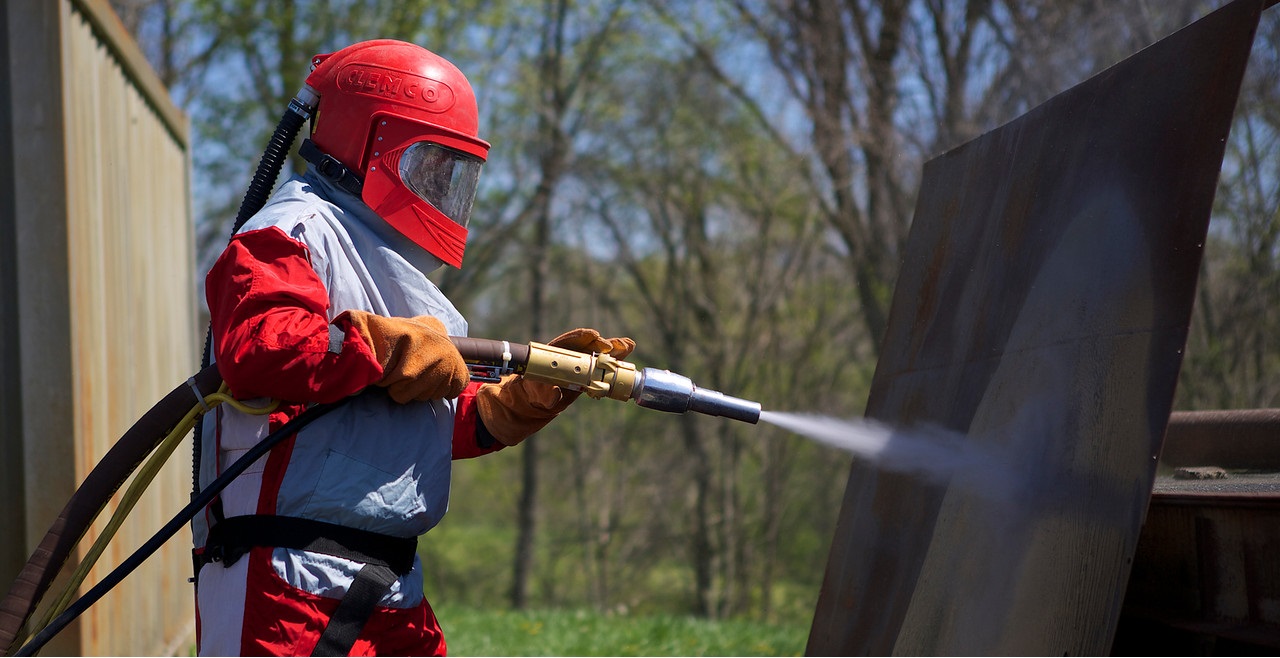Dustless media blasting is safe and OSHA compliant. It’s important to understand what OSHA is and why you need to be compliant. The Occupational Safety and Health Administration (OSHA) assures safe conditions for working people. Especially working people in the abrasive blasting industry where silicosis has been common for far too long.
Next, we need to understand what silicosis is and why it’s so harmful. Abrasive blast media is used to blast paint, grime, and other unwanted matter off objects. Abrasive blast media is typically made of crystalline silica. During abrasive blasting, silica crystals shatter into sharp points. When inhaled they can cause scarring and stiffening of the lungs. Inhaling silica caused many poor health conditions. Lung cancer, kidney disease, and COPD (Chronic Obstructive Pulmonary Disease) were a few of those conditions.
OSHA Recommendations
OSHA recommends three practices to limit silica exposure and ensure the safety of abrasive blasting workers. These three practices result in OSHA compliance.
- Utilize non-toxic abrasive blasting material
- Compress dust by using a wet delivery method
- Use personal protective equipment (PPE)
Thankfully, there is an easy solution that fulfills all of the OSHA recommendations. It’s Dustless media blasting.
Non-abrasive Materials
Dustless media blasting is a process that combines pressurized water and non-toxic blasting media called amorphous silica; recycled and crushed bottle glass which eliminates the dust cloud that typically forms when dry blasting. Environmentally friendly recycled and crushed bottle glass is the preferred media for dustless media blasting. It is widely available in various grit sizes. Recycled and crushed glass does not cause silicosis because it doesn’t contain silica. Safe abrasives can create high levels of dust used in dry blasting which is why dustless media blasting is the new gold standard when projects require media blasting.

Wet Delivery Method
OSHA recommends using a wet delivery to suppress the high levels of dust associated with dry blasting. Dustless media blasting uses wet delivery. Water encapsulates the abrasive and coating being removed. This prevents media from airborne and inhaled.
Personal Protective Equipment
OSHA highly recommends the use of personal protective equipment (PPE). Wearing personal protective equipment makes the worker more comfortable and enhances their safety. The operator use a National Institute for Occupational Safety and Health (NIOSH) approved blast respirator when performing dustless blasting outdoors or indoors.

This type of equipment provides the operator with the necessary eye protection, hearing protection, and climate control for added comfort to the operator. Media Blasting equipment is loud, especially in confined areas making hearing protection a must. When wearing eye protection, be sure it has a wide viewing area to enhance safety. Good head gear such as a hard hat, respirator, and act as your eye and ear protection.
Dustless media blasting and proper PPE makes OSHA compliance and operators health and safety simple.

